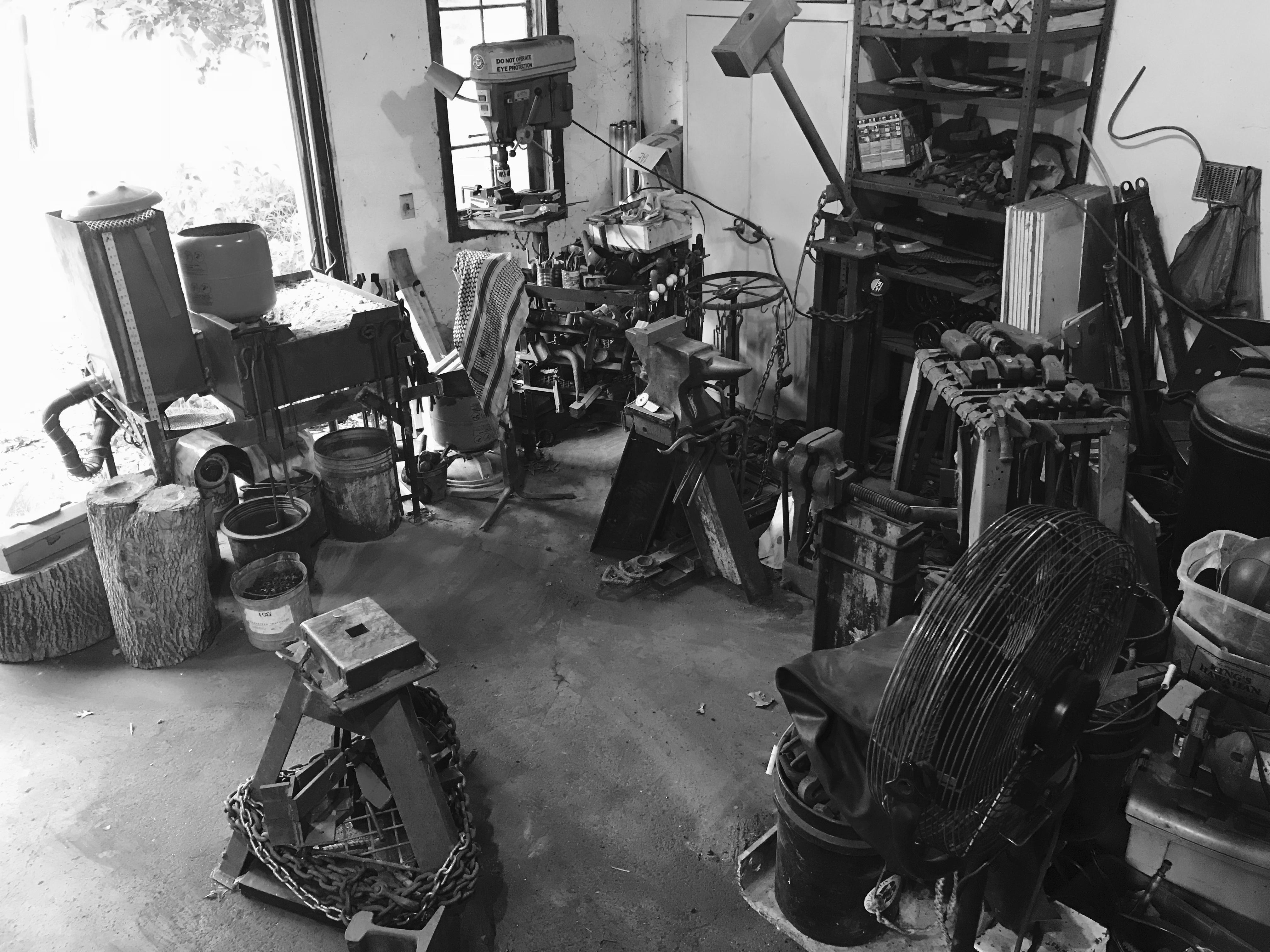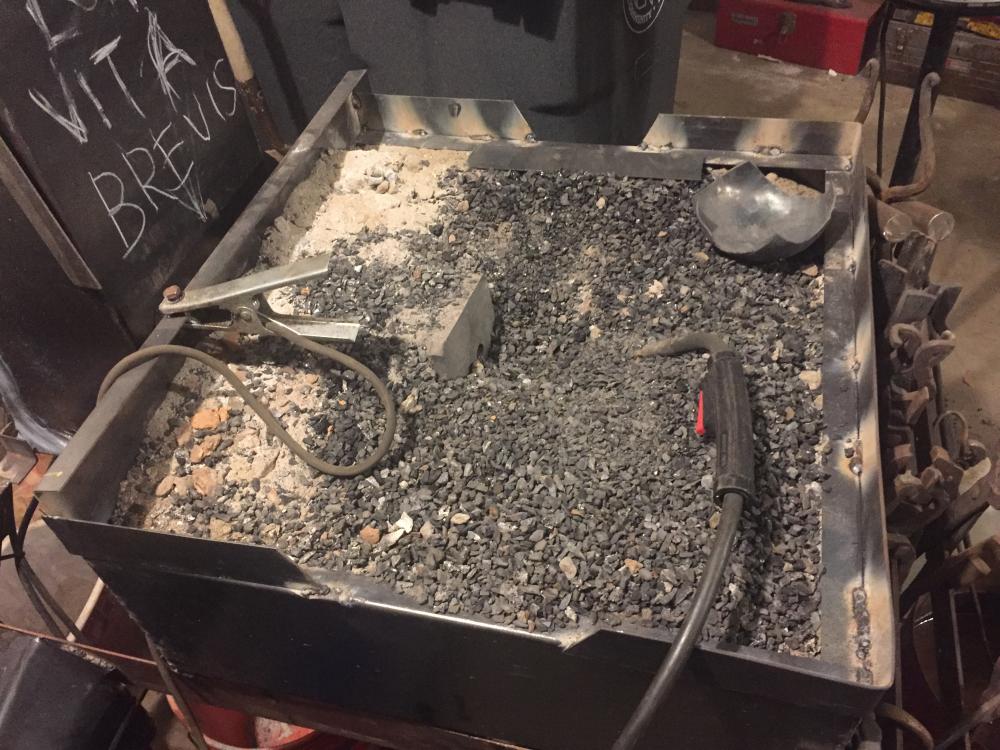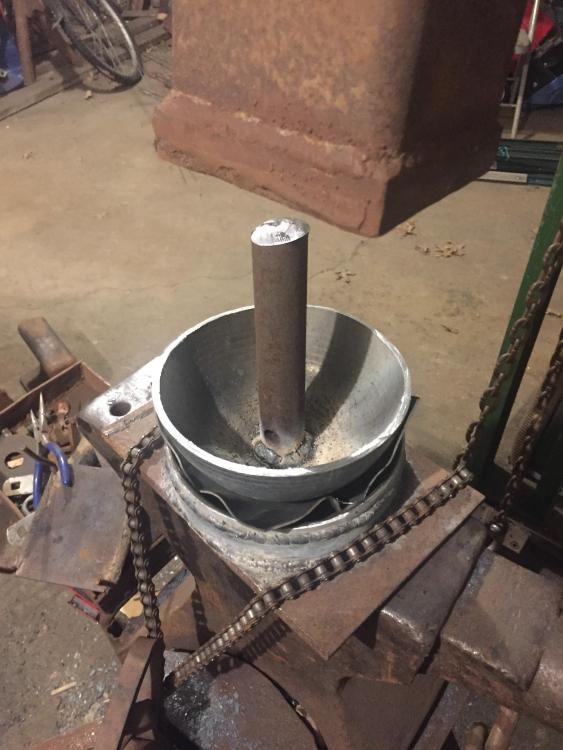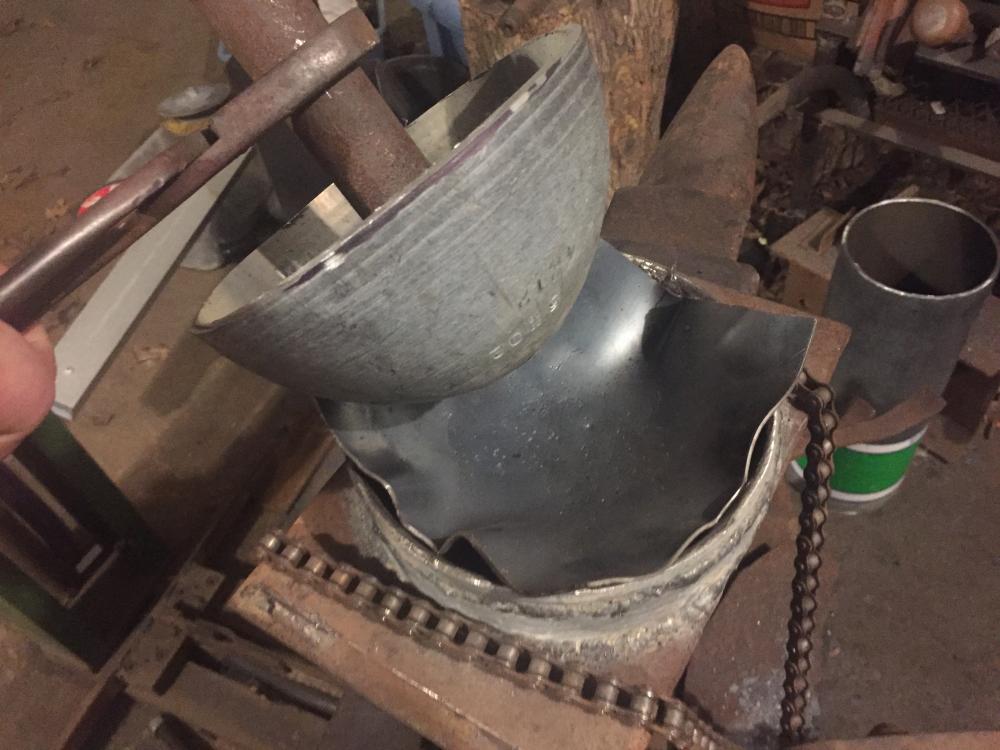-
Posts
19,312 -
Joined
-
Last visited
Content Type
Profiles
Forums
Articles
Gallery
Downloads
Events
Everything posted by JHCC
-
Don't weld on the anvil; weld on the stand. There's no reason that the top of the stand needs to be level, as long as it's holding the anvil solidly in the right place. I would experiment with putting steel shims under the anvil until you find the right combination, then weld them onto the stand. Then fasten the anvil to the stand with silicone, and you're golden.
-
Nice!
-
So what you’re thinking is a combination of crucible (container for melting the metal) and mold (container for giving shape to the molten metal and holding it as it cools), yes? I’ll leave it to those with more knowledge of casting to say whether or not this is a good idea or what kind of results one could expect, but even if it might work, you still haven’t answered a key question: why bother? Why go to the time, trouble, and expense of making such an item when you could buy a perfectly serviceable bending iron for less than you’ll spend on this casting project?
-

Platform on the side of an anvil
JHCC replied to Nick Owen's topic in Anvils, Swage Blocks, and Mandrels
Nick, what do you mean by “stick in all directions”? Stacking, gluing, and screwing will get you the anvil block you need without a need for a metal brace. What do you have in mind? -
The accepted terms are “British English” and “American English”.
-

What did you do in the shop today?
JHCC replied to Mark Ling's topic in Blacksmithing, General Discussion
Addendum: the scuba tank is one that was retired after it failed hydrostatic testing. The walls are about 1/4” thick, as you can see in the center section of the cylinder standing on end in the background of the above photo. With the valve removed, there’s no excess air pressure to worry about, and because the tank never held anything besides air, there’s nothing nasty that’s needs to be purged (other than a layer of paint on the inside that should be removed before doing any welding). The steel is soft enough to cut with a portaband. -

New side blast with water tuyere & bosh (pic heavy)
JHCC replied to JHCC's topic in Solid Fuel Forges
-

What did you do in the shop today?
JHCC replied to Mark Ling's topic in Blacksmithing, General Discussion
Welded a rim onto the new forge. Also cut the top off the scuba tank and welded a thick stem to the inside. Together with the dishing form I made a few days ago and some judicious whacks from the treadle hammer, it should handle the initial forming of some bowls I’ll be making. -
Really nice job.
-
Okay, Billy, tell us what you really think!
-
First, do what Jim Coke suggests. Then bed the anvil down on a layer of silicone caulk; this will hold it solidly in place and deaden the ring.
-
Not all of them... ...but I won’t argue.
-
Definitely one time you want to be the one one on the rebound.
-

M&H Armitage Mouse Hole Anvil
JHCC replied to TwistedCustoms's topic in Anvils, Swage Blocks, and Mandrels
Probably 1820-1830, then. -
Don't get over-wrought; it's 50 Shades of Gray Iron.
-
Put it in a trash bag, add vinegar, squeeze out the air, duct tape it shut. Be creative!
-

Rusty hammer build along
JHCC replied to Jason Fry's topic in Power Hammers, Treadle Hammers, Olivers
Lookin' good! -
Well, get to know it on a casual basis first. Getting together for lunch or coffee can be a great way to get to know each other without the pressure of dinner and a fancy evening. Spend more time listening than you do talking; try to find out what the Trenton might want from a relationship to see if that's the way you want to do as well. Respect the Trenton's boundaries, and don't try to take things too far too fast.
-
Slabs in a brake rotor is a recipe for failure; don't even bother. If you have a good supply of pine slabs, then you definitely need to go with a separate fire and moving the coals with a shovel. If your shovel doesn't have a handle, make a new one from a tree branch. You're just moving coals; it doesn't have to be strong enough to withstand digging in heavy clay. There is a simple way to use what you have to good effect. You have everything you need to succeed; the only thing standing in your way is YOU. The question you have to ask yourself is, Am I willing to do what will work? Or am I going to keep trying to do something that isn't going to work (or isn't going to work well) because that's the way that I think I should do it?
-

New side blast with water tuyere & bosh (pic heavy)
JHCC replied to JHCC's topic in Solid Fuel Forges
I've got an idea for what to do about the mixing of fill and coal; I'll try it out and post a picture if it works. I've only fired it up once so far, so the following may not be representative. I found that the clinker tended to build up mostly under the nozzle, but also with some significant lumps above it as well, much the same as the old JABOD. However (and I can't overemphasize how significant this is), it was SUPER EASY to remove the clinker: just build the fire up a bit to melt everything together, kill the blast and allow the clinker to harden up a bit, and fish it out with a poker. Easy peasy. With the JABOD, I had a lot of trouble with the clinker sticking to the adobe (despite the many different sand/clay proportions I tried), and it could take a lot of leverage to get it out (with the attendant risk of something breaking loose and scattering burning coal everywhere). It would almost always bring away pieces of the firebowl. Sometimes I even had to hack the stuff out with a hammer and chisel. In short, because it's so easy to remove the clinker and the heat of the fire is not going to heat up the clinker or the adobe around the tuyere, it's much easier to keep a good fire going and to have its heat go into the metal where it belongs. I haven't lost much coal over the edge, but that's just from being careful. It'll be easier once the rim is on. I've decided to add a little gate over the gap in the back rail, which I'll only open up when I need the pass-through for a long piece. One of the biggest differences between your forge and mine is the depth of the hearth. Mine is significantly deeper, so the fireball sits in front of and slightly above the tuyere, whereas yours (if I remember correctly) is primarily in front. I think if you increased the height of the sides of your forge by about four inches and added a lot more fill, it might work better. I'll try and show you what I mean the next time we get together. (Which might be next week; you around on Tuesday or Wednesday evening?) -
Doesn't have to be a drum; any fire will do, as long as it's of sufficient size. They have these wonderful things called "axes". Go around to construction sites and ask if you can have their scrap lumber. Many contractors are happy to have you take that stuff away, as it saves them haulage and disposal fees. This is also the time of year that a lot of people are cleaning up around their houses and are getting rid of brush and tree limbs. Everything you need is out there; you just have to open your eyes and look. The trick is to not leave the shovel in the fire.
-
What SLAG said, every word.
-
Suggestion, since we know you have wood to burn: build a separate wood fire (in your 55 gal drum or something) and transfer the burning coals into the forge as needed.
-
That’s a beautiful piece of work. Seems like a bit of a departure from your usual simplicity, but you’ve done an amazing job of incorporating tremendous complexity within a design of enormous sophistication. Once again, my hat is off to you!
-
“Especially not one that’s red.” John Deere, blacksmith



